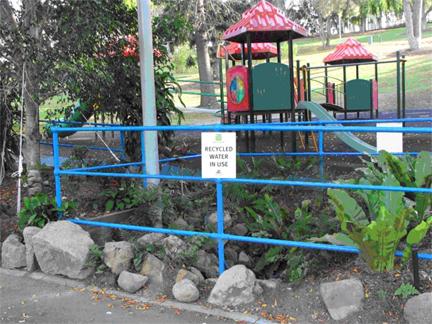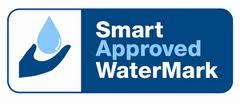Winter 2011: How Aussie nursery growers are addressing the water issue
Regional Report Ventura and Santa Barbara Counties by Julie Newman
Australia is considered the driest continent. Only about 26% of Australian agricultural products are irrigated crops, and these are produced on less than 1% of the land area dedicated to agriculture. Water supply is a significant factor limiting the size of irrigated agriculture because existing crops already use around 75% of Australia’s water. Moreover, from 2001-2008, record-breaking drought conditions and water restrictions placed on users of urban water supplies led to a sharp decrease in domestic gardening activity across Australia and substantial declines in plant sales. Brisbane experienced one of the most severe droughts in over a century. Mandated water restrictions led to per capita water usage below 37 gallons per day and was one of the lowest of any Western city in the world (fig. 1).

Fig. 1. Brisbane recently made headlines when flooding due to unprecedented rainfall occurred over much of the northeast Australian state of Queensland. However, during record-breaking drought conditions from 2001-2008, Brisbane gardens, landscapes and city parks were mandated by local regulations to observe stringent water restrictions. This had a drastic effect on the economy of the nursery industry. (photo by Julie Newman)
Furthermore, irrigated agriculture has incurred significant environmental costs in some areas of Australia. Land and water degradation, excluding weeds and pests, has been estimated to cost up to 3.4 billion U.S. dollars (USD) annually. A third of Australia’s rivers are in a degraded condition due to high water extraction rates and high nutrient runoff from surrounding land.
The Nursery and Garden Industry, Australia, (NGIA) the national organization for the Australian nursery industry, recognizes that water issues have a major impact on the industry. As a result, NGIA has worked with many different types of organizations to implement programs that have resulted in improved irrigation efficiency, reduced runoff and increased customer awareness of plants that can be used to conserve water. In this issue of UCNFA News, I will describe a few of these programs.
NIASA
The accreditation program for production nurseries and growing media—Nursery Industry Accreditation Scheme Australia (NIASA)—is a national scheme for production nurseries and growing media suppliers which operate in accordance with a set of national “best management practice” (BMP) guidelines. The BMP guidelines were developed over a period of years by industry representatives and researchers and are financially supported by the national Research and Development program. A wide range of issues are covered in this scheme which includes sanitation practices, crop management practices (including plant nutrition, pest management and irrigation practices) and general site management. The guidelines continue to evolve and are reviewed annually to make sure they remain relevant.
Any wholesale/production nursery or growing media/potting mix manufacturer in Australia can join NIASA if they implement the NIASA BMP Guidelines. Membership is voluntary and participants are not required to belong to a nursery and garden industry association but must comply with the NIASA Accreditation audit. All NIASA accredited businesses are audited at least annually by Industry Development Officers (IDOs) who are based across the country.Growers that implement these BMPs have demonstrated reduction in water use, runoff and leaching. Benefits of implementing these practices also include access to technical assistance; reduced costs through improved production practices; increased marketplace recognition and customer confidence (many government departments and large landscape contractors prefer to buy from NIASA nurseries); improved knowledge, skills and professionalism; reduced occupational health and safety issues; and a positive public image due the demonstrated commitment to efficient and environmentally conscious management practices.
EcoHort
With environmental issues becoming increasingly prominent both locally and globally, sound environmental practice is rapidly gaining importance for Australian agricultural businesses. Growers must demonstrate to industry, government and the community their sound environmental stewardship and compliance with the diverse range of environmental legislation, including water quality regulations. Growers of Australian agricultural commodities have adopted industry-specific environmental management (EMS) programs to assess and improve their environmental performance on their own farms. These programs develop farming systems which have minimal off-site impacts—unintended negative consequences which affect someone else; for example another farmer or future generations, or a threatened ecosystem or species. Adoption of these practices demonstrates that runoff containing pollutants such as pesticides and nutrients are not an issue; it also demonstrates that pests are properly controlled with no loss to biodiversity in surrounding areas.
To demonstrate minimal off-site impacts, farming systems need to achieve minimal leaching of nutrients to the groundwater; negligible wind and water erosion; no persistent toxicities (acidity, heavy metals, agrochemicals); control of pests, diseases and weeds; and no loss of biodiversity in surrounding areas. Self-audits of the EMS show if the required management actions are occurring and where improvements can be made. Growers may also choose to undergo a third-party certification audit to have claims of environmental responsibility independently assessed. This can be compliant with ISO 14001, the internationally accepted standard.
EcoHort is the industry-specific EMS for production nurseries and growing media businesses. The program builds on the NIASA module and presents businesses with recognition for their efforts in rising to the environmental challenge. To gain formal EcoHort certification, a business must first achieve NIASA accreditation.

Fig. 2. Smart Approved WaterMark is Australia’s outdoor water saving labeling program for products and services that help to reduce water use around the home.
Smart Approved WaterMark
NIASA guidelines and EcoHort are approved by Smart Approved WaterMark. Smart Approved WaterMark is Australia’s leading labeling scheme for products and services that help reduce water use outdoors and around households across Australia. The Smart Approved WaterMark scheme was created in response to the national objective of reducing per-capita water consumption. The purpose of the scheme is to reduce water consumption through the promotion of products and services that help conserve water use. The scheme was established by four associations: the Australian Water Association, the Irrigation Association of Australia, the Water Services Association of Australia, and the Nursery and Garden Industry, Australia. The Australian Government supports Smart WaterMark with a grant to promote the scheme to the Australian public. States and Territories have agreed to give preference to Smart WaterMark endorsed products when offering rebates, and to include the WaterMark in broader water policy mechanisms. The Smart WaterMark logo (fig. 2) can be used by NIASA businesses when referring to NIASA accreditation, including marketing and advertising materials, web sites, and corporate stationery and signage.












